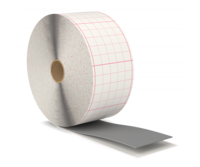Especially in wet areas ( for example in the bathroom), special grouting compounds such as silicones are used because of the high requirements. If the tile joints in the bathroom should be sealed with squirtable sealants, a professionally executed joint connection of bathroom tiles to washbasins, bathtubs, toilets or shower stalls is the basic requirement for tight and long-lasting joints. Egosilicones exhibit high weathering, aging and UV resistance and are fungicidal to prevent possible infestation by molds in high humidity and water stress. In addition, they show very good adhesion to ceramic substrates and natural stone.
The connecting joints in the bathroom are exposed to chemical and/or physical influences and constant wet loads. Because of this, these are maintenance joints. The grout in the bath or bathroom therefore has to be checked regularly and, if necessary, the old tile joints should be regrouted. This concerns, for example, the connection joints to the shower, shower cabin and to the bathtub, which are grouted with the tiles and therefore protected against penetrating moisture and water. Immediate and professional grout renovation of damaged silicone joints prevents moisture and consequential damage.
In 10 steps to the perfect joint in the bathroom
- During joint renovation, the old joints are first removed mechanically with a joint cutter or carpet knife (cutter). Sealing systems underneath the ceramic coverings and the connection areas should not be damaged in the process.
- The existing joint sealant should be removed as far as possible without leaving any residue.
- The adhesion-reducing layers on the adjacent areas should be removed with a suitable Cleaner.
- The substrate, joint flanks and bonding surfaces have to be clean, dry, grease-free, solid and load-bearing.
- In case of mold infestation of the joint sealant and the joint, the mold must be completely removed with a suitable Cleaner.
- If necessary, pre-treat the bonding surfaces with a Primer and backfill with a non-water-absorbent round cord to prevent three-sided adhesion.
- The specified minimum flash-off time between the application of the Primer and the application of the joint sealant must be adhered to.
- The new joint sealant can now be applied smoothly and without bubbles, taking into account the correct joint sealing.
- If necessary, the sealant should then be smoothed with a suitable smoothing agent. The excess smoothing agent has to be removed immediately to avoid contamination of adjacent components.
- The curing times of the sealant should be taken into account before using the sanitary object.
FAQ about sealing joints in the bathroom
No, commercially available dishwashing detergents contain tensides. These can remain as stains on the surface. In addition, the use of dishwashing detergents can later lead to abrasion due to their grease-dissolving properties and therefore to the formation of streaks as well as to dull, matt joint surfaces.
Yes, the backfill should be about 20% larger than the joint width and is placed in the joint with some pressure.
No, the use of standard sealants can lead to edge zone contamination. For natural stone, special natural stone silicones (EGOSILICON 351, EGOSILICON 365) should be used.
Yes, for triangular joints, a joint width of at least 5 mm should be kept.
Yes, 5 mm to establish permanent flank adhesion.
A PE film (polyethylene film) can be used to prevent three-sided adhesion.
Yes, there are closed-cell round cords. These do not absorb moisture and also counteract the formation of mold.
To permanently protect the structure from water damage and water Penetration, the connections in sanitary and wet rooms must be elastically sealed.
Yes, a silicone joint is usually exposed to chemical and physical influences and must be checked at regular intervals and renewed if necessary to prevent possible consequential damage.
We recommend our special sanitary silicones for this purpose. These are characterized by very good processing properties such as smoothability, modelability, fungicidal setting and a wide range of colors. For natural stone and marble, use our natural stone silicone.
This depends, among other things, on the geometry of the adhesive joint (joint depth, sealant thickness) and the room climate. At a relative humidity of 50 % and a temperature of +23 °C, silicones crosslink approx. 2-3 mm from the outside to the inside. The temperature and humidity directly influence the speed of crosslinking, which can take several days.
It is important to ensure that any water running off the wall tiles can drain quickly into the tub.
For example, if the jointing is not done properly, water on the sealant surface cannot drain off and dry off completely in the long term. Over a longer period of time, dirt, soap residues and cleaning agents are increasingly accumulated, which leads to accelerated mold growth.
A sealant joint affected by mold must be promptly and professionally repaired and remediated to prevent subsequent damage.
Fungicides are used to protect the sealant against mold infestation and are added to sealants in small quantities.
Yes, to prevent the infestation and spread of mold.
The joint dimension is determined, among other things, by the load, taking into account the permissible total deformation.
Connection joints on e.g. washstands, bidets, WCs or urinals are usually subject to minor movements. Sealing in the form of a triangular joint is sufficient here.
The backfill material serves to limit the joint depth or dimension of the respective specified joint geometry. For a consistent, bubble-free and clean joint formation, the backfill also provides sufficient resistance during the application, removal and smoothing of the sealant. This prevents three-sided adhesion.

We are happy to help.
- Application Assistant
- Surface Assistant
- Attributes Assistant
- Sealant Calculator
- Primer Calculator














